Welcome to the comprehensive handbook: “The Ultimate Guide to Grouper Fish Farming.” Whether you’re a seasoned aquaculturist or just dipping your toes into fish farming, this guide is your gateway to successful grouper farming. Each aspect includes tank setup, water quality management, feeding techniques, and disease control.
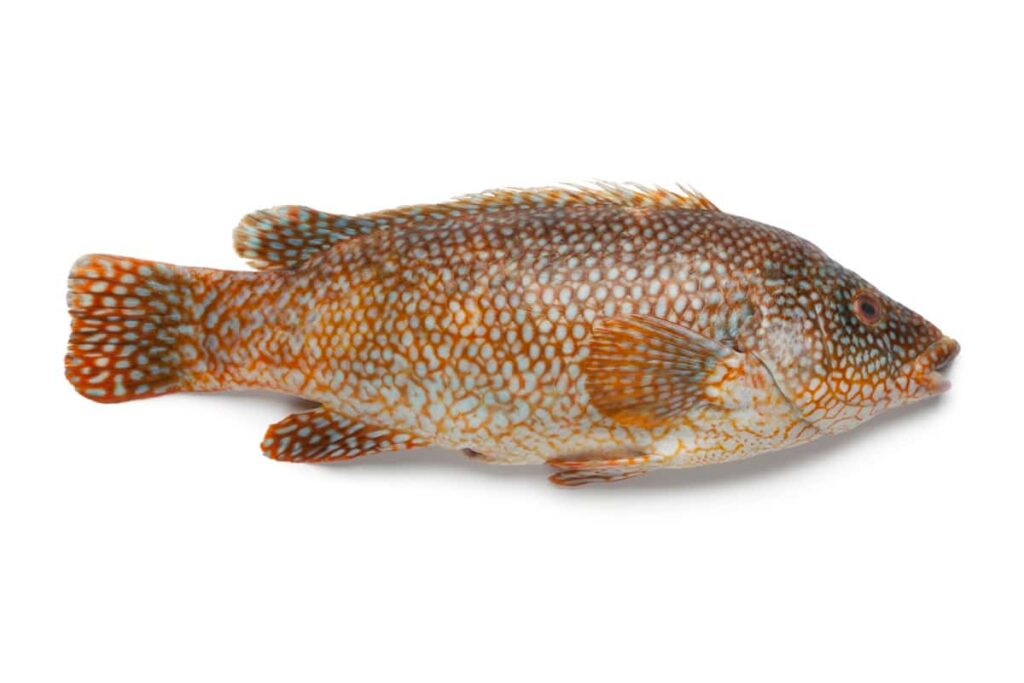
What is Grouper Fish Farming?
Groupers, like the orange-spotted grouper (Epinephelus coioides), hold significant value in Asian live seafood markets due to their delectable flesh. These fish are prized for their top-notch quality. The orange-spotted grouper resides in shallow reefs and lagoons, dwelling at depths of over 30 meters amidst mud and rubble. Their young counterparts, called juveniles, prefer estuaries with sandy, muddy, and gravelly bottoms, often among mangroves.
These groupers are versatile in handling varying temperatures and salt levels. Their diet primarily consists of fish, with crustaceans and mollusks making up part of their meals. Interestingly, they possess a unique reproductive system. They start as females and some later transition to males. Males can emerge from juveniles or post-spawning females.
Females mature at about two years, reaching around 320 mm in size, while primary males mature earlier, at about one year and 242 mm. The transition from female to male usually occurs when they’re 5-6 years old and measure 550-750 mm. Spawning mostly happens from March to June; these fish gather around the full and new moons for this purpose.
Understanding the Biology and Behavior of Grouper Fish
- Ecological Habitat: Groupers, prominent for their quality flesh, exhibit diverse habitats. Varieties like the orange-spotted grouper (Epinephelus coioides) inhabit shallow reefs, lagoons, and estuaries, spanning from sandy to muddy substrates.
- Adaptability: Noteworthy for their ability to withstand varying temperatures and salinity levels, these fish are eurythermal and euryhaline, making them adaptable to different environments.
- Feeding Habits: Groupers maintain a varied diet. Fish make up a substantial part, complemented by crustaceans and mollusks, showcasing their position as apex predators in their ecosystems.
- Unique Reproduction: Groupers display diandric protogyny, wherein some individuals change sex from female to male. Males may emerge from juvenile fish or post-spawning females.
- Maturation and Size: Female groupers mature around two years, at roughly 320 mm in size. On the other hand, primary males mature faster, at about one year and 242 mm.
- Sexual Transition: The shift from female to male typically occurs when the fish are 5-6 years old and measure 550-750 mm. This transformation often coincides with lunar cycles, particularly during full and new moons.
- Spawning Behavior: Major spawning periods, such as March to June, see groupers forming aggregations for reproduction. Spawning is suspected to be linked with moon phases.
In case you missed it: From Water Quality to Feeding Habits: A Comprehensive Guide to Successful Fishpond Management
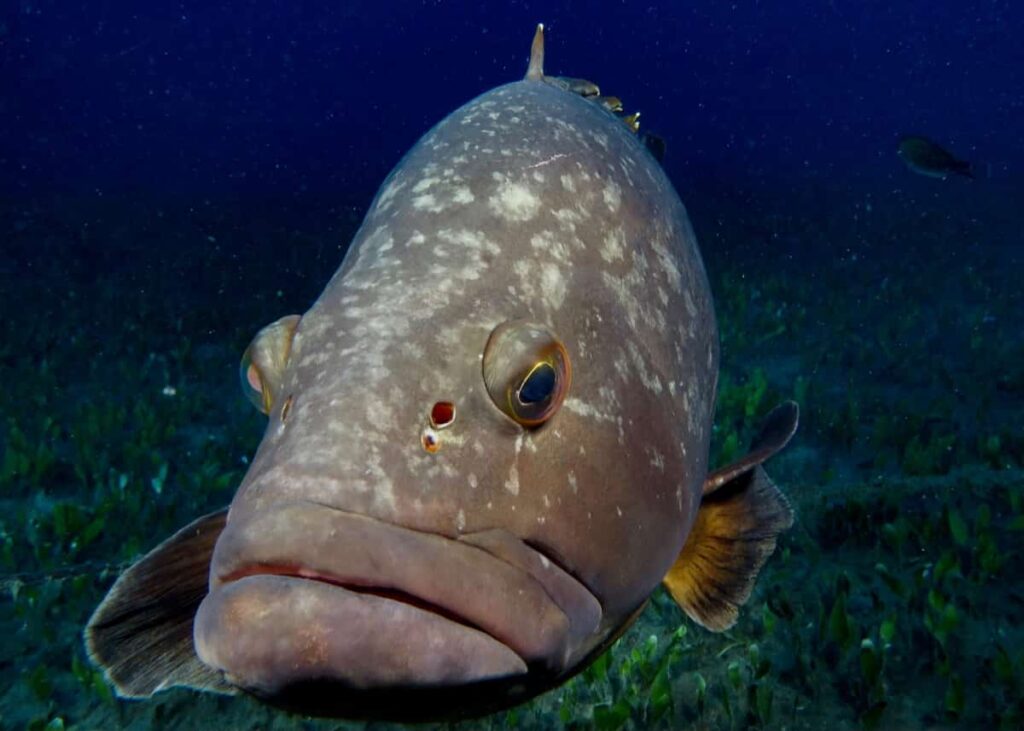
Selecting the Right Species of Grouper for Farming
When venturing into grouper fish farming, choosing the suitable species is paramount. Due to its market demand and adaptability, the orange-spotted grouper (Epinephelus coioides) is a prime candidate. This species thrives in shallow reefs, lagoons, and estuaries, displaying versatile behavior across different substrates.
- Sourcing Adult Fish: Adult fish weighing over 2 kg are selected from the wild or farms using hook and line techniques. These individuals serve as broodstock for reproduction.
- Transportation and Sedation: Collected fish undergo mild sedation using 50 ppm 2-phenoxyethanol solution and are transported in covered tanks with aerated water to minimize stress.
- Barotrauma Management: Upon arrival at the hatchery, gas trapped in the air bladder (barotrauma) is eliminated by inserting a needle into the gas bladder through the anus.
- Quarantine and Bath: Fish exhibiting normal swimming behavior are placed in quarantine for two weeks. They are subjected to a 30-minute bath in 200 ppm formalin solution followed by a 5-minute dip in freshwater every three days.
- Maturation Tank: After quarantine, fish are moved to a maturation cum spawning tank equipped with a re-circulatory water system. The tank’s capacity is 125 tons.
- Feeding and Supplementation: Fish are fed a daily diet of fresh or frozen squid to satiation. Weekly supplementation of micronutrients like vitamins A, B-complexes, C, E, and vitamin-mineral mix is provided.
- Cannulation for Gamete Collection: After a month, fish are cannulated using a fish cannula or baby feeding tube for collecting gametes. The cannula is inserted into the urino-genital orifice, and gametes are collected for examination.
Setting Up a Grouper Fish Farm: Infrastructure and Equipment
Creating an optimal environment for grouper farming involves meticulous planning. Constructing maturation cum spawning tanks equipped with re-circulatory water systems is essential. Quarantine areas play in ensuring fish health. Common infrastructure includes ponds or tanks with efficient water filtration systems, proper aeration, and temperature control. Adequate land space, access to clean water sources, and a secure perimeter are crucial.
Essential equipment encompasses feeding systems, nets for enclosure, water pumps, aerators, and monitoring devices for water quality and temperature. Quarantine facilities, backup power sources, and disease prevention measures are essential. Rigorous attention is given to water quality management, with systems like those used for milkfish aquaculture.
Spawning and Larval Rearing of Grouper Fish
Spawning: Natural spawning begins around the 4th month after stocking and can occur 4-10 times yearly. Fish usually spawn in the evening hours just before sunset, showing courtship behavior with vertical bursts of swimming. Fertilization occurs externally, resulting in transparent, floating fertilized eggs with a diameter of 850-900 micrometers and a single oil globule. Typically, each spawning yields around 2-3 lakh fertilized eggs.
Incubation: After 14 hours of spawning, eggs are collected using a mesh net and disinfected with 20 ppm active iodine solution. Eggs are stocked in an aquarium or an indoor nursery-rearing tank at different densities. Eggs hatch within 18-20 hours at 28-30°C, with an average hatching rate exceeding 85%. Newly hatched larvae are an average length of 1.6 mm with a yolk sac, and their mouths become functional after 48-56 hours.
In case you missed it: The Rise of Fish Farming in Nigeria: Key Rules to Start from Scratch
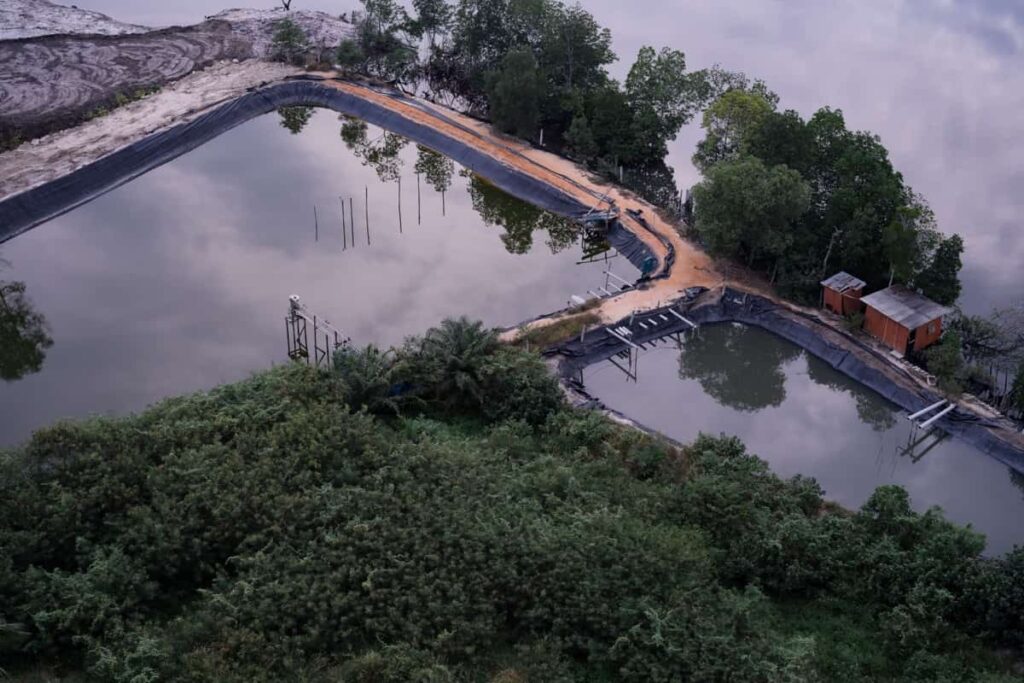
Larval Rearing: Larvae are initially siphoned to remove unhatched eggs and egg shells, and a thin oil film is added to the water surface to prevent surface aggregation mortality. Exogenous feeding begins after the 3rd day when the mouth opens. Properly sized feed, such as copepod nauplii and screened rotifers, are provided. Larval rearing tank water undergoes sand filtration and ozone treatment to ensure pathogen-free conditions.
Various live feeds like microalgae, copepod nauplii, rotifers, and brine shrimp nauplii are used for nutrition. Rearing conditions are gradually adjusted, incorporating different feed densities, sizes, and water exchange rates to facilitate growth. Metamorphosis occurs within 30-40 days, during which cannibalism can be managed by size grading and increased feeding frequency.
Rearing of Fry: After 40 days, larvae are transferred to fry-rearing tanks. Fry are size-graded weekly to prevent cannibalism. A transition from micro-encapsulated feed to extruded larval feed occurs, and water exchange is performed daily. Feeding frequency is adjusted, and fry is harvested at around 5-6 cm size after 60 days.
Water Quality Management in Grouper Fish Farming
Maintaining pristine water quality is pivotal. Re-circulatory systems linked to maturation tanks aid in sustaining an ideal environment. Like milkfish practices, sand filters and ozone treatment help eliminate contaminants. These practices foster a thriving ecosystem for healthy fish growth.
Feeding and Nutrition Requirements for Grouper Fish
Serving a balanced diet is a cornerstone of successful grouper farming. Fresh or frozen squid constitutes their main diet, while essential micro-nutrients are supplemented. Their nutrition should consist of high-quality protein sources such as fishmeal and pellets, meeting a protein content of around 40-50%.
Essential nutrients like carbohydrates, lipids, vitamins (A, D, E), and minerals (calcium, phosphorus) are vital for their well-being. Feeding frequency depends on their age and size, typically 2-3 times daily. Overfeeding should be avoided to prevent water pollution. Young larvae rely on a diverse diet, encompassing microalgae, copepod nauplii, rotifers, and brine shrimp nauplii.
Disease Prevention and Health Management in Grouper Fish Farms
Ensuring fish health is pivotal in grouper farming. Quarantine procedures and preventive measures, including formalin baths, are executed. Regular water quality monitoring, proper nutrition, and maintaining suitable environmental conditions help prevent stress and susceptibility to common diseases like bacterial infections (e.g., Vibrio spp.), parasitic infestations (e.g., Amyloodinium), and viral outbreaks (e.g., iridoviruses).
In case you missed it: The Rise of Fish Farming in Kenya: Key Rules to Start from Scratch
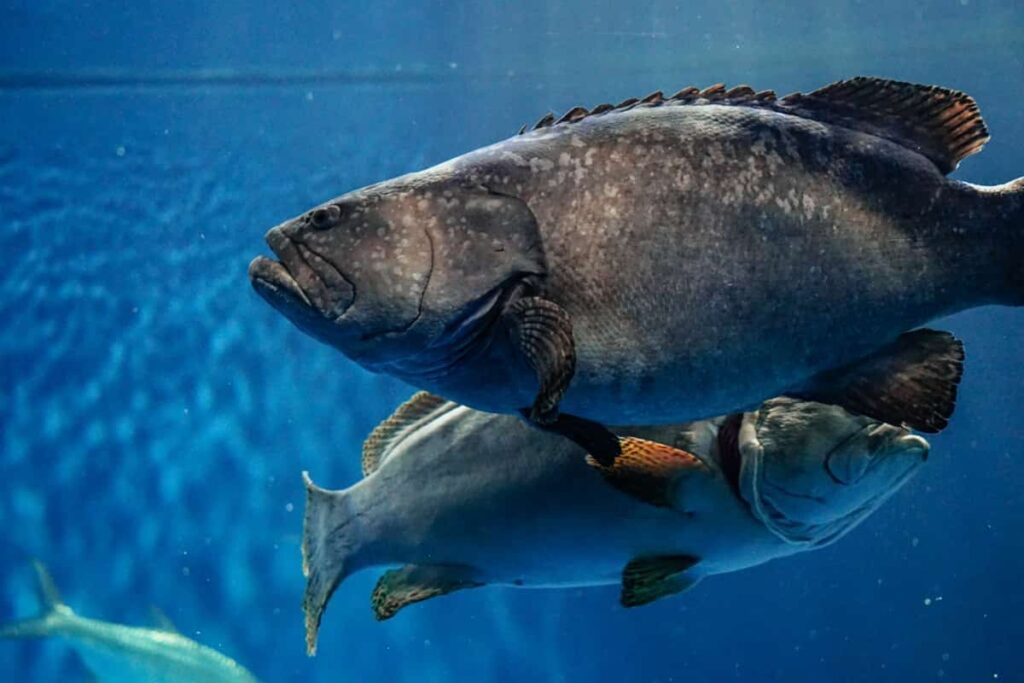
Quarantine protocols for new stock, vaccination when possible, and biosecurity measures are vital. Swift detection through regular health checks, and early intervention with appropriate treatments, limit disease spread. Monitoring and addressing potential pathogens are critical in maintaining a disease-free environment.
Breeding and Reproduction Techniques for Grouper Fish
The orange-spotted grouper’s unique reproductive system presents challenges and opportunities. Cannulation techniques for gamete collection, gas bladder management, and inducing sex reversal through hormone pellets are vital steps in controlled breeding.
Cage Farming: Grouper farming is best conducted in cages placed in calm waters with at least 10 m depth and 30-50 cm/s water current velocity, featuring sandy or muddy bottoms.
Water Quality Requirements: Optimal water conditions include salinity of 15-35 ppt, TAN levels below 0.1 ppm, temperature between 23-30°C, dissolved oxygen (DO) above five ppm, and nitrite concentration at 0.05 ppm.
Cage Design: HDPE or GI cages are used, with cage size based on operational convenience. Circular HDPE cages of 6 m diameter and 4 m depth are manageable by 5-6 people. GI cages suit protected areas or backwaters, while HDPE cages are better for offshore farming. Different mooring systems are employed, including grid anchoring and single-point mooring, using cement blocks and alloy steel chains for stability.
Cage Net and Design: Cage nets comprise flexible mesh material (HDPE, PES, PP, or PA). Polyester nets offer strength, fouling resistance, and abrasion resistance. A square mesh size with a hanging ratio (E) of 0.71 is preferred, with inner and outer net bags having varying mesh sizes as fish grow.
Stocking and Feeding: Seeds of 30 g size are stocked at 35 no./m³ initially, later reduced to 20 no./m³ after 4-5 months. Fish are fed pelleted feed with 40-45% protein and 10-12% fat, adjusted to body weight and size.
Care and Maintenance: Regular checks of the cage, mooring system, and net are essential. Cleaning of cage frames and inspection of mooring chains and floats are conducted monthly. Fouling organisms are monitored, and nets are replaced if 50% of meshes are clogged. Nets should be replaced periodically, and proper cleaning and repairs are essential.
Harvesting: Fish are harvested either continually or in batches, typically after a day of fasting. Harvesting is done in-situ or towed cages, with fish chilled, packed in ice, and transported. Expected production is around 16 kg/m³ with 80-90% survival rate.
Monitoring and Records: Regular observation of fish behavior and growth helps understand their health. Monthly fish sampling aids in growth monitoring and feed calculation. Maintaining records of practices like mortality, feed consumption, and growth aids disease management and production improvement.
In case you missed it: Project Report of Pangasius Fish Farming: Cultivation Economics, Production Cost, and Profit Analysis
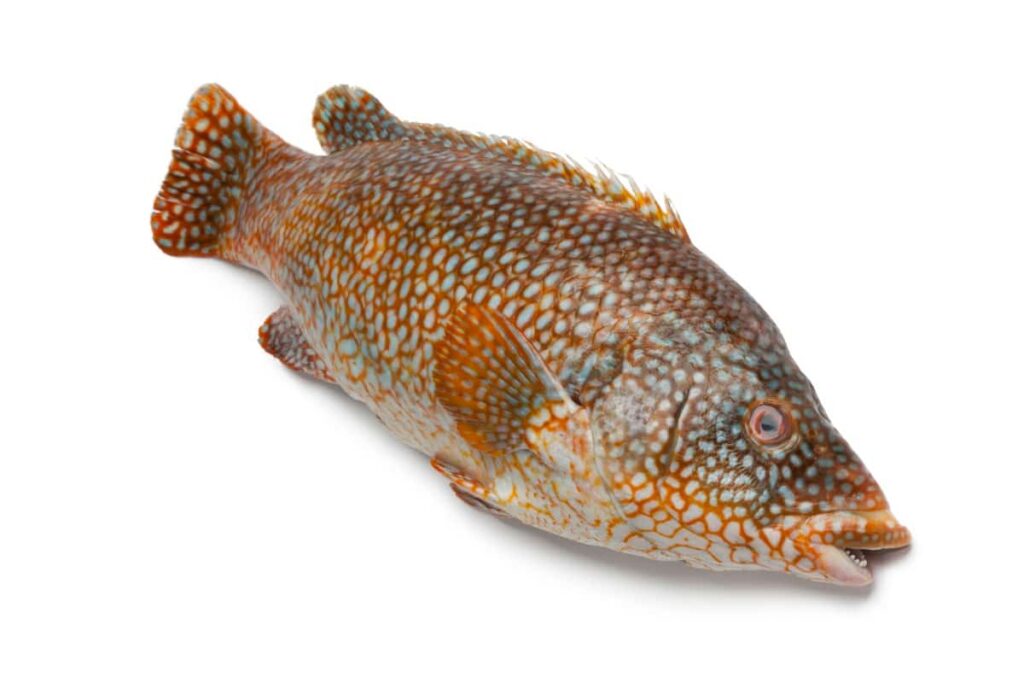
Growth Rate: The growth progression of groupers over different time intervals, indicating the average body weight (ABW) in grams.
| At the start (0 days) | 30 grams |
| After 30 days | 52 grams |
| After 90 days | 110 grams |
| After 150 days | 268 grams |
| After 210 days | 455 grams |
| After 270 days | 735 grams |
| After 330 days | 1070 grams |
| After 390 days | 1420 grams |
Growth and Harvesting Strategies in Grouper Fish Farming
Strategic growth and harvesting are key aspects. After nurturing the larvae through various stages, they transition to fry rearing. Grading and feeding regimens ensure healthy growth. Eventually, fingerlings are primed for transfer to larger systems, such as ponds or cages, for further development and eventual harvest. Breeding and Reproduction Techniques for Grouper Fish.
In case you missed it: Project Report of RAS Fish Farming: Production Economics, Cost, and Profit Analysis
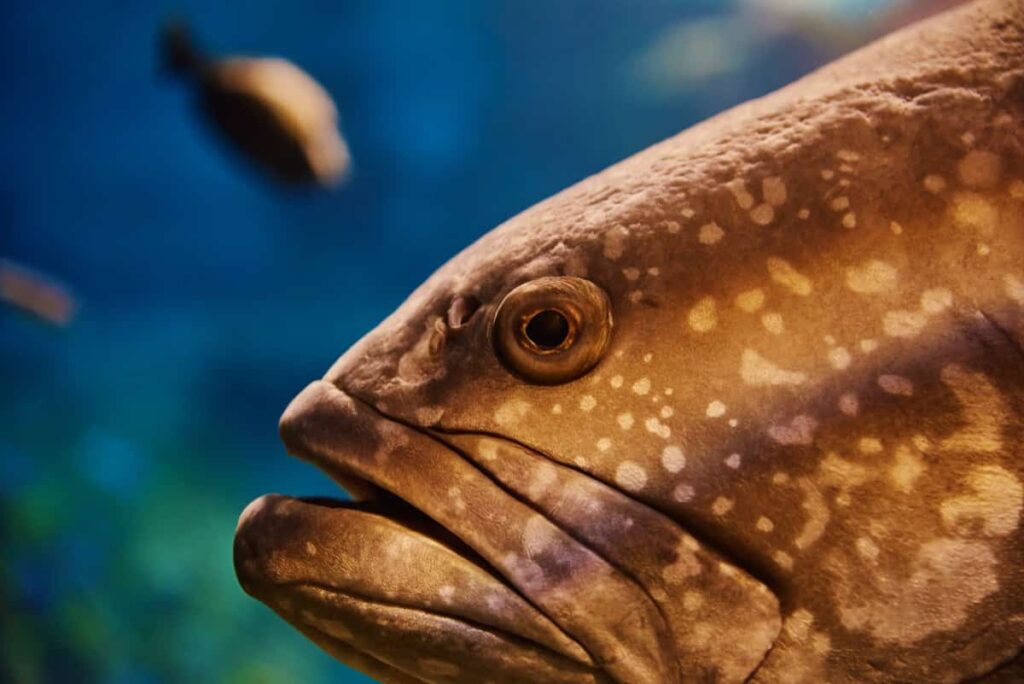
For transportation, grouper seed is placed in oxygenated plastic bags at ten no./l for long distances or in open tanks with oxygenation for short distances. Oxygen levels are kept above eight ppm using cylinders, and fish are fasted for 48 hours before transport. Fish are starved before harvesting for an empty gut and better shelf life. Fish are either harvested in situ or towed to suitable areas. Nets are lifted, fish are concentrated and scooped, and then chilled and packed in ice for transportation.
Conclusion
Successful grouper fish farming hinges on meticulous planning, optimal water conditions, and balanced nutrition. Adequate space, proper feeding, disease management, and continuous monitoring are paramount. By adhering to these guidelines, farmers can foster healthy growth, maximize yields, and ensure sustainable grouper farming operations.
- How to Maximize Sheep Farming Profit
- Broccoli Varieties: Choosing the Right Cultivars for Your Farm
- How to Raise Pigs in Your Own Backyard: A Comprehensive Guide
- Budget Friendly Sheep Shed Ideas: Cheap and Low-Cost Tips
- How Much Do Cattle Farmers Make: Revenue Streams in Cattle Farming
- Management Pests and Diseases in Your Cotton Field
- Sheep Farming Business Plan for Beginners
- Aquaponic Farming at Home: A Step-By-Step Guide
- Profitable Village Farming Business Ideas in 2024
- High-Yield Aquaculture: Fast-Growing Fish for Farming
- Effective Fish Pond Construction Techniques for Beginners
- Irrigation and Water Management in Pineapple Farming
- Blossom to Harvest: Mastering Flowering and Pollination in Papaya Farming
- Pig Fattening Essentials: From Selection to Sale for Beginners
- Raising Wagyu Cattle: A Complete Guide for Premium Beef Production
- Soil Types and Their Water Holding Capacity
- Optimizing Irrigation Schedules for Coconut Groves for Enhanced Yield
- Espresso Your Garden: Coffee Grounds for Healthier Acid-Loving Plants
- The Best Soil Mix for Snake Plants: How to Mix Your Own Snake Plant Soil
- Green Thumb Success: Expert Tips for Cultivating Greenhouse Beans All Year Round
- Bloom All Year Round: The Ultimate Guide to Indoor Hyacinth Care
- Eco-Friendly Gardening: How to Make Liquid Fertilizer from Kitchen Waste
- Ultimate Guide to Grow Anise in Pots: Explore Seed Propagation to Harvesting
- Guide to Raising Chester White Pigs: Discover Breed Facts to Growth Management
- Mastering the Elegance: The Ultimate Guide to Weeping Cherry Tree Care, Planting, and Maintenance
- Ultimate Guide to Planting Garlic in Grow Bags: Growing Strategies for Beginners
- How to Fix Spider Plant Leaf-Related Problems: Natural and Organic Remedies
- 10 Reasons Why Your Tulsi Plant is Shedding Leaves: Home Remedies and Solutions
- Optimizing Growth and Yield: The Advantages of Palm Bunch Ash Fertilizer
- Utilizing Neem Oil Extract as a Natural Pesticide for Hydrangea
- From Soil to Harvest: Various Ways in Which Farmers Can Use AI Tools
- Steps to Encourage and Induce Citrus Flowers: A Comprehensive Guide
- How to Fix Snake Plant Leaf-Related Issues: Natural and Organic Remedies
- Transform Your Garden into a Fragrant Oasis with Raat Ki Rani (Night Blooming Jasmine)
- Discover the Ideal Chicken Breeds for Philippine Farms
- How to Create a Poultry Egg Farm Business Plan for Profits
